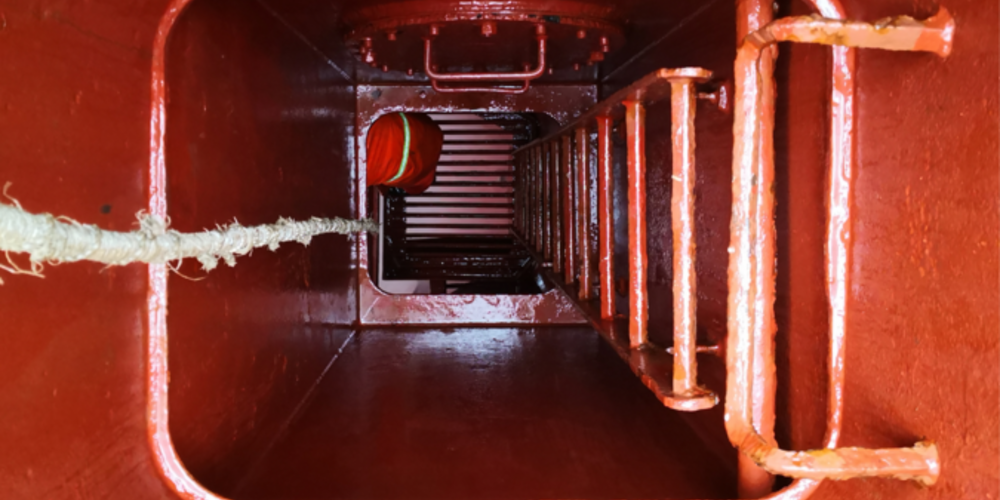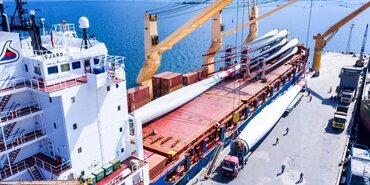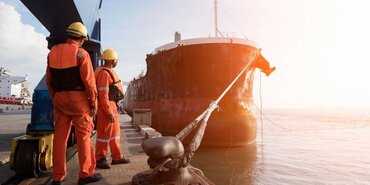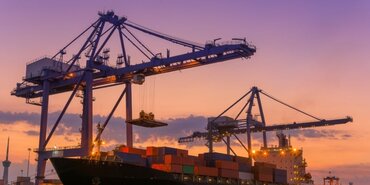TT Talk - Death in spaces

There will be innumerable spaces found through the global supply chain that should be considered enclosed or confined, some more obvious than others. Unfortunately these spaces claim many lives each year when ill-prepared workers enter them, often for reasons never to be fully understood.
Let's start by seeking to demystify the terms.
Generally on land the term used is 'confined spaces', whereas the maritime would typically adopts the form 'enclosed spaces'. Inevitably, precise legal definitions around the world differ, but most reflect the essence given in IMO's Resolution A. 1050(27):
"Enclosed space means a space which has any of the following characteristics:
- limited openings for entry and exit;
- inadequate ventilation; and
- is not designed for continuous worker occupancy"
Some definitions outline the range of risks that may be encountered by those entering such as space, including fire and explosion, lack of oxygen, presence of hazardous or toxic substances.
The key risk is that workers may not readily recognise spaces that could present danger. For example, a stairwell within the cargo hold of a ship is a space that could lack oxygen or contain toxic fumes, dependant on the cargo being carried. Containers and other cargo transport units pose similar risks; there may be a lack of knowledge of the cargo packed or whether fumigants have been used. Similarly, tanks units (whether a road barrel or tank container) certainly qualify as enclosed spaces.
Workers may not readily recognise spaces that could present danger
What is the enclosed space problem?
Put simply, without sufficient oxygen the human body starts to shut down very quickly, with two primary implications being heart failure and brain damage. In the event of heart failure the brain can survive for approximately six minutes, but after five minutes irreversible damage can be sustained. Any rescue operations are therefore time critical and even with an immediate deployment the risk or serious injury or fatality is elevated.
One of the primary causes of reduced oxygen levels is the increased presence of other gases, such as carbon dioxide. This may arise from rusting of the ship's structure or metal cargoes, oxidation of cargoes such as coal or the decomposition of biodegradable cargoes (organic cargoes including fish meal, logs, bark, or wood pellets) - this list is not exhaustive. All these lead to carbon dioxide - and potentially other gases - being released, simultaneously depleting the oxygen.
Other associated hazards include flammable or toxic vapours from leaking cargoes or leaking pipes or hoses on machinery and dust for example from dry bulk cargoes such as grain or coal.
The air we typically breathe contains approximately 79% nitrogen and 21% oxygen; imbalances increase the associated risks and physical effects on the body very quickly. If oxygen levels are depleted to a range of 4%-6% a person could fall into a fatal coma in less than a minute. Carbon dioxide has a density higher than air, but critically is colourless, odourless and tasteless. Consequently, when entering such a lethal space there are no obvious red flags. In terms of symptoms there are no warning signs such as coughing or feeling breathless or nauseous, where the oxygen levels are sufficiently depleted the first sign is the individual will simply pass out.
This can happen so quickly the individual is unlikely to have the opportunity to raise an alarm, nor undertake the simplest of tasks such as reaching the exit if the space. The quick onset and catastrophic nature of these symptoms often leads to others rushing to the aid of the casualty, unaware if the reason for their collapse. Statistically, over 60% of fatalities connected to confined and enclosed spaces are suffered by those who observe the casualty without appreciating the cause and enter the space to attempt a rescue – people innately seeking to help.
Over 60% of fatalities...are suffered by...people innately seeking to help
How can workers be protected within confined spaces?
This silent and invisible killer emphasises the importance of raising awareness of the risk, developing robust procedures and undertaking drills, practicing rescues.
Since the risks in general mat not be immediately apparent and because natural human responses prevail, it is critical to ensure your workforce are thoroughly aware, through initial training, regular toolbox talks and specific situational briefings. Procedures are likely to be informed by local health and safety regulations, but need to be thoughtfully aligned to your operations.
Procedures...need to be thoughtfully aligned to your operations
Drills and practice rescues will help cement understanding; physically rescuing a person from within a space such as a tank container is extremely difficult in itself, but it is of course not just the physical challenge. It is immediately recognising that a collapsed/unresponsive person within the space could have been overcome by a hostile environment and making decisions not to enter without following procedure and wearing appropriate PPE.
While not exhaustive, many of the following risk mitigation strategies are applicable, whether on board ship or on land:
- Always assume that confined spaces are unsafe
- Create awareness of the risks and continually invest in staff training (recognising particularly the emotional reaction of would be rescuers)
- Procedures need to be robust but not overly burdensome or complex (impeding the tendency for short cuts is important)
- Embody a culture where time and resource are fully aligned to safety, regardless how minor the immediate task
- If entry is unavoidable, undertake a risk assessment to ensure that there is a safe system of work, including making sure there are emergency arrangements in place before work starts (always prepare for the worst)
- Where possible, ventilate the area before entry and ensure good general ventilation during work activities (use breathing apparatus if the air inside the space cannot be made fit to breathe)
- Test the air before entry; monitor it and the workers during the procedure, deploying a watcher who is physically present
- Ensure that people inside the space can communicate with those on the outside
- Restrict access to authorised personnel - such as implementing a permit to work system
- Ensure that the workers selected are competent and physically able to do the task; air quality monitoring or safety equipment is of little benefit if the users are insufficiently trained to use it
- Perform emergency rescue drills, providing practice in the process of safely removing an injured or unconscious person
These basic suggestions have either no or very little cost implications, and can save lives, keeping a company's greatest asset, their people, safe.
-
If you would like further information, or have any comments, please email us, or take this opportunity to forward to any others who you may feel would be interested.
Documents
TT Talk Edition 298 (Chinese) (622 kB) 15/05/2023
- Author
- Peregrine Storrs-Fox
- Date
- 02/05/2023





